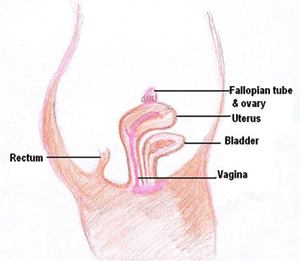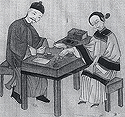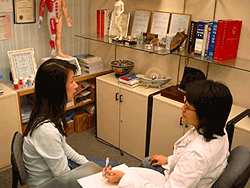Introduction of TCM Gynecology
Gynecology and obstetrics are branches of Western medicine concerned with the treatment of women and they form a significant part of today's modern medicine practice.
Gynecology deals with disorders of the female reproductive system (vagina, uterus, and ovaries) and the breasts. Specific health problems are such as menstrual disorders, disturbances of sex hormones, pelvic infections, injuries and mal-development of the reproductive organs, benign and malignant tumor formed in the ovaries and uterine, vaginal diseases and the prescription of contraceptive devices.

Obstetrics deals with the treatment of women during pregnancy, labor, childbirth and the postnatal period. Obstetricians work to ensure that pregnancy culminates in the delivery of a healthy baby, without impairing the health of the mother.
Moreover, infertility has become its own subspecialty, doctors utilizes a variety of technological medical breakthroughs such as artificial insemination and embryo implantations to help women become pregnant who cannot to do so through traditional means.
Technological advancements in diagnostic tests such as X-rays, computed tomography(CT) scans and magnetic resonance imaging(MRI) contribute greatly to understand and healing of women diseases. Even with all this progress, however, some concern still remains about the long term efficacy of prescribed treatments and their undesirable side effects.
The Women Specialty in Chinese Medicine
Traditional Chinese Medicine (TCM) has a long history of treating women's diseases. Although both Western and Chinese medicines share the same goal in restoring health, there are some significant differences between the two medical systems. TCM approaches to understand illness and maintain well-being are unique; its practice is highly sophisticated with particular theories, diagnoses and treatments for women.
Early on, TCM understood the importance of treating diseases specific to women. The Yellow Emperor’s Classic of Internal Medicine, a famous TCM classic completed 2000 years ago, described the anatomy, physiology, diagnosis and diseases that were specific to women. For generations, physicians continued to explore and consolidate the knowledge of women's related health problems, which has evolved into a particular form of healing.
 According to TCM, the female reproductive system consists of the breasts, uterus, cervix, vagina, external vulva and the surrounding meridians and collaterals. They facilitate unique physiological functions in women, such as menstruation, pregnancy, childbirth and lactation. In reviewing the traditional Chinese monographs, female diseases are traditionally come under categories like menstrual disorders, pregnancy, abnormal uterine bleeding, vaginal discharge, antepartum (before delivery), postpartum (after delivery) and miscellaneous types. The categories have now narrowed down into five major scopes: menstruation, vaginal discharge, pregnancy, childbirth and miscellaneous. Unlike Western obstetrics, pregnancy, labor or childbirth problems have not divided into an individual branch of medicine. TCM gynecological specialists will treat all kinds of female diseases, which may not be covered under our Western understanding.
According to TCM, the female reproductive system consists of the breasts, uterus, cervix, vagina, external vulva and the surrounding meridians and collaterals. They facilitate unique physiological functions in women, such as menstruation, pregnancy, childbirth and lactation. In reviewing the traditional Chinese monographs, female diseases are traditionally come under categories like menstrual disorders, pregnancy, abnormal uterine bleeding, vaginal discharge, antepartum (before delivery), postpartum (after delivery) and miscellaneous types. The categories have now narrowed down into five major scopes: menstruation, vaginal discharge, pregnancy, childbirth and miscellaneous. Unlike Western obstetrics, pregnancy, labor or childbirth problems have not divided into an individual branch of medicine. TCM gynecological specialists will treat all kinds of female diseases, which may not be covered under our Western understanding.
In modern practice, TCM gynecological specialists also make use of modern diagnostic methods that commonly used in the Western medicine. They will first consider the type of disease from Western diagnostic perspective and then further identify a internal disharmony of the patient to decide on suitable treatment plan.
In comparison with the ancient practice, the range of TCM treatable conditions has been greatly expanded to include diseases that were rarely treated before, diseases such as endometriosis, ectopic pregnancy, uterine fibroids, abnormal uterine bleeding, senior osteoporosis and leukoplakia in the external genital area are now officially come down the disease spectrum of TCM gynecology, and the results are encouraging. Moreover, certain clinical difficulties in Western Medicine can still attempt to be treated using TCM methods, as treatment based on syndrome differentiation making it complementary to Western medicine therapies, enhancing overall efficacy.


